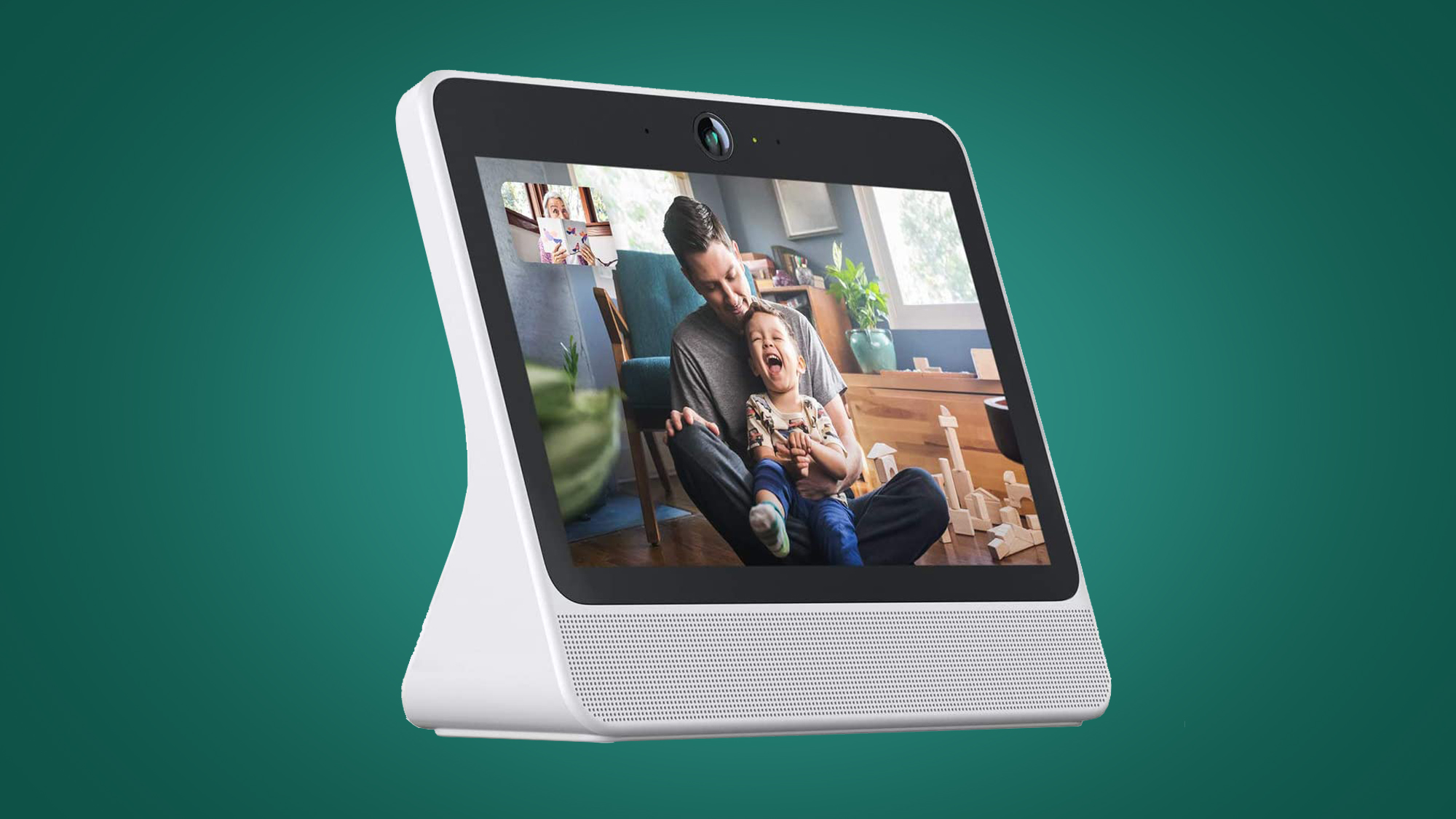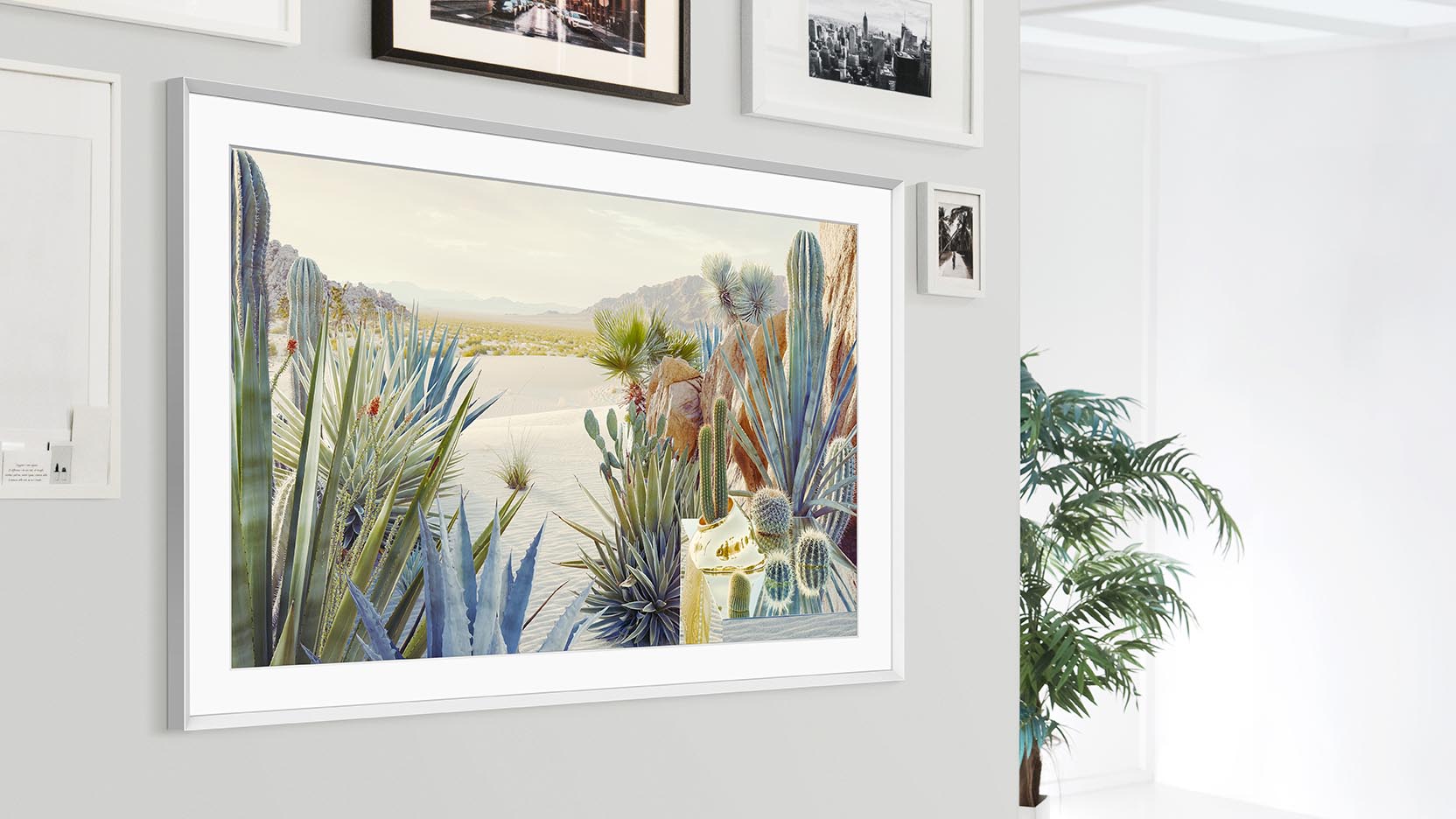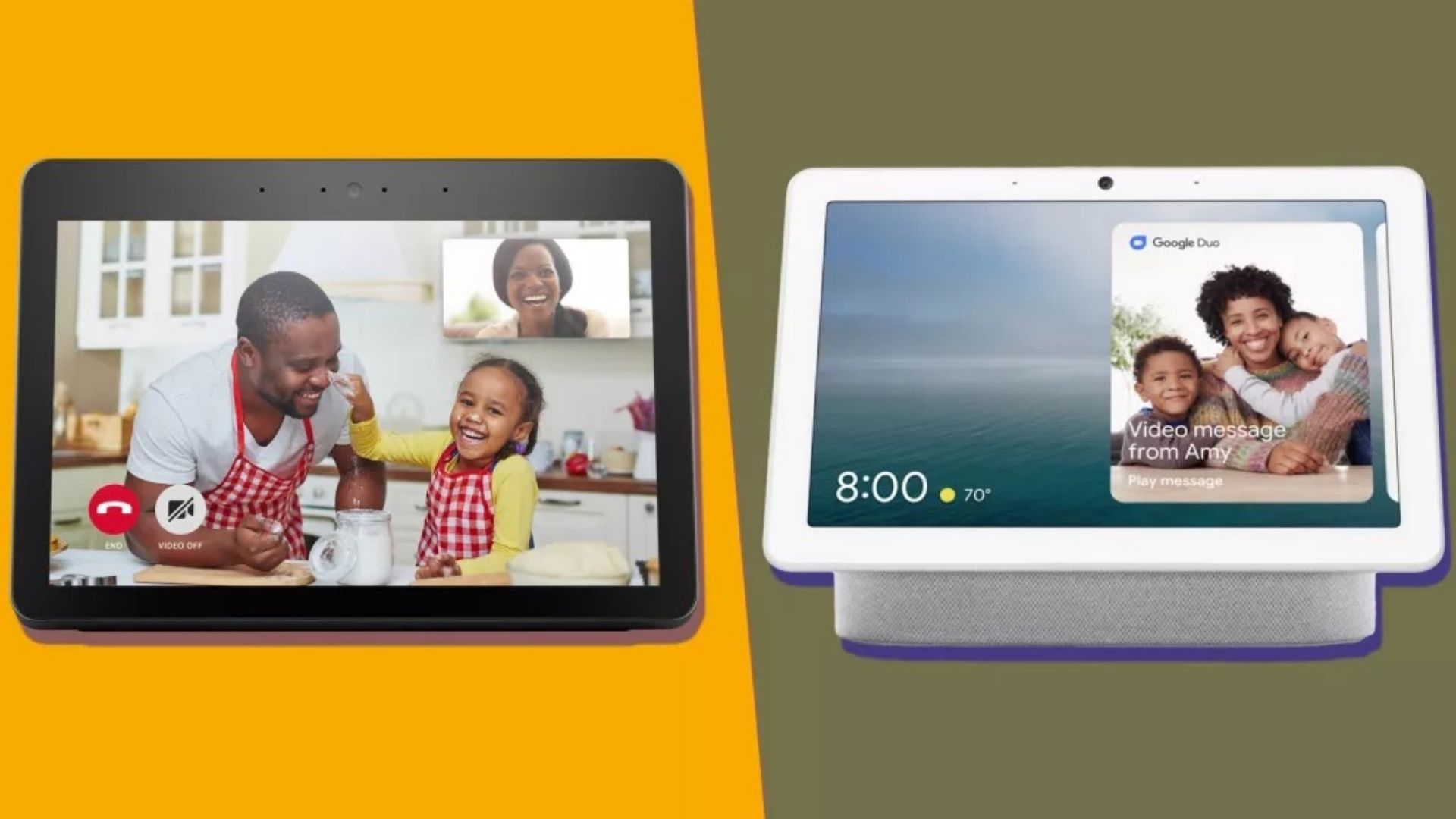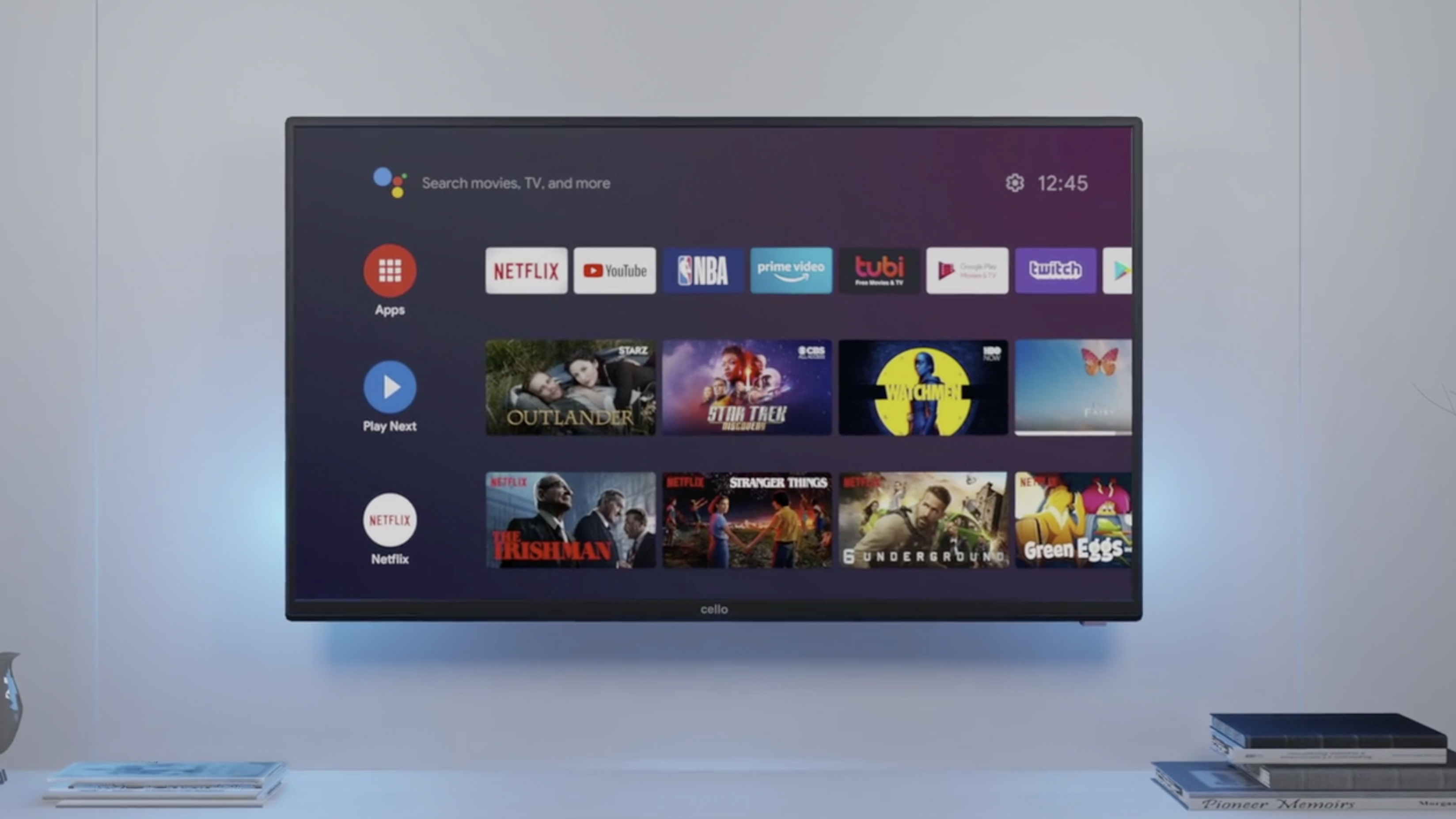Small TV vs smart display: which is better?

If you're looking for a new screen on the smaller side, you're probably looking at either a small TV or a smart display.
Smart displays and small TVs could be a smart move if space in your home is tight and you want an affordable, compact way to watch TV shows, make video calls, and more; even though large-screen TVs are all the rage right now, it's simply not an option for those of us without expansive living rooms and cash-busting wallets.
A smaller screen may not have the high-end technologies such as HDR or 4K resolution that we've come to expect with larger screens, but it doesn't mean that you still won't get a great picture.
So, what's the difference between a smart display and small TV? Small TVs are screens measuring 19-32 inches. However, with 65 and 75-inch TVs being the norm these days, if you want compact but still want to retain quality, you'll really be looking at a 32-inch TV at a minimum. Small TVs make a perfect second screen for bedrooms, kitchens or studio apartments.
A smart display, on the other hand, is the perfect countertop companion. They are smart speakers' big brother and offer a touch-screen display with all the functions you'd expect from your smart speakers, such as playing music, streaming internet content, and using Amazon Alexa or Google Assistant voice assistants. Amazon, Google and Facebook all have a range of smart displays.
So whether you want a desktop dashboard or a more advanced viewing experience, this guide will walk you through the differences between a small TV and a smart display and help you make the best decision for your space, budget and viewing needs.
Size matters: when does a smart display become a small TV?
The screen size on smart display averages at around 10 inches, although this differs between brands. Small TVs tend to sit in the 19-32 inch range, so there is a distinct difference in sizing between the two product categories.
Sign up for breaking news, reviews, opinion, top tech deals, and more.
So once you go over 15-inches, you start moving from smart display to small TV. But let's take a more in-depth look at the different sizes on offer.
The three key smart display ranges to consider are the Google Nest Hub, Amazon Echo Show, and Facebook Portal.
Google has a couple of different smart display options, but the best one in the line up has to be the Google Nest Hub Max. This smart display has a 10-inch HD screen that will make everything from watching movies to making video calls an absolute pleasure. There's also Google Nest Hub which offers a seven-inch screen that is ideal for your kitchen counter or even sitting on your desk to help the workday go a bit quicker.
The Amazon Echo Show comes in three sizes, 5-inch, 8-inch and 10-inch. The Amazon Echo Show 10 is the best in the range and has an HD 10.1-inch screen with 1280 x 800p resolution.
And finally, Facebook Portal. Facebook is pretty new to the smart display game, but has a couple of models already on the market. The Facebook Portal+ has a whopping 15.6-inch screen, and the standard Portal has a 10-inch HD display.
Now we move on to small TVs. Whether you're looking for something basic or a TV with smart capabilities, the most significant decision you face is what screen size you should opt for. TV screens are measured diagonally from corner to corner, and small TV screen sizes range from 19 inches through to 32 inches. The size you opt for needs to be the right size for your room, of course – but anything smaller than 32-inch may be heading in to PC monitor territory.
Small TV vs smart display pricing: what do they cost?

When it comes to the pricing of small TVs, you can get one from $103 / £75 / AU$133 but if you want a quality screen, you have to take in to account the resolution and whether it has any smart technology. So it is usually worth spending a little more to get a better viewing experience.
The Frame from Samsung is both stylish and compact. Prices start at $546 / £399 / AU$706 for its smallest 32-inch, but with this TV you're getting a quality QLED picture even in that tiny form factor.
If you're looking for a budget TV then Cello offers a high definition screen in both 24- and 32-inch. It's an Android smart TV with a great picture, and prices start from $272 / £199 / AU$252.
Sony is another major player that produces small TVs at a reasonable price. The Sony KDL32WE613 offers high definition resolution in a 32-inch display. Prices at $410 / £249 / AU$530 this TV can also record so you'll not miss out on your favourite programs.
Moving on to smart displays, these can vary in price according to the screen's size and which brand you opt for.
Google Nest Hub has a seven-inch touch-screen display and is priced at $109 / £79 / AU$99 whilst the Google Nest Hub Max with a 10-inch display will set you back $299 / £219 / AU$388.
Amazon has smart displays starting at $69.99 / £49.99 / AU$129 for a five-inch display. The Amazon Echo Show 8 is priced at $109 / £79.99 / AU$142, but the Amazon Echo Show 10 (3rd generation) with an HD display is $409 / £239 / AU$529.
Facebook Portal have three models in their range, the Portal mini has an eight-inch display screen and is priced at $176 / £129 / AU$228 whilst the Portal which is the primary model has an impressive 10-inch screen is priced at $232 / £169 / AU$299. The Portal+ which is the model that really compares to small TVs, having a 15.6-inch screen and being priced at a loftier $368 / £269 /AU$476.
Why you should choose a smart display

Smart displays are, in essence, smart speakers with touch screen displays. They can play video content and music and have the same hands-free voice assistant features. Some such as Facebook Portal+ and Google Nest Hub Max even let you video chat.
With screens between seven and 15.6 inches, there's a smart display that will fit any space. The Amazon Echo Show and Google Nest Hub also have the bonus of operating other smart home devices that might control your lighting or heating.
Amazon Echo was the first to embrace this technology and their smart displays, including the Echo Show 5, Echo Show 8, and Echo Show 10 which all have full Alexa capability. You can also access Amazon Prime Video and other third-party streaming services such as BBC iPlayer.
Google Nest has the Nest Hub, with a seven-inch screen, and the Nest Hub Max, with a 10-inch screen. Both let you access YouTube, Google's own Play Music, Play Movies and TV store. But you can also cast TV and movies from your mobile, laptop or tablet, so it gives you a lot more choice about where you get your content from.
Facebook also have gotten in on the smart display act, whilst the Amazon and Google offerings focus on content and entertainment, Facebook is more about communication. It allows you to video chat with friends and family if you are happy using messenger or WhatsApp. It has Alexa built-in and lets you listen to music, watch the news or use the voice assistant.
If you're looking for a screen that will sit comfortably on your desk, bedside table, kitchen counter or even bookcase – or you'd like an all-in-one solution to letting you view your entertainment whilst having the benefit of Amazon or Google voice assistants – then a smart display is for you. If you're looking for a screen that you can gather the family around and watch full-length movies or TV shows, you may find it falls short, not because of the screen's quality but it's highly compact size.
Why you should choose a small TV

A small TV is ideal if you're looking for a second screen to watch your favourite TV shows and movies without having to worry about taking up a lot of space. There are plenty of options when it comes to size, so, however much space you have to spare, there's a TV that will fit.
Plus, a small TV is going to give you more ways to access your favourite content, given smart TVs generally come pre-loaded with numerous streaming apps, and a streaming device can always help you access one that aren't included. Smart displays are getting better in this area – with Netflix having come to the Google Nest Hub Max – but the offering is much more limited.
You may also have the option of watching live TV channels that don't require a Wi-Fi connection, too, so if your internet goes down, you still have something to watch.
The Samsung 32-inch UE32T4307 HD smart TV, for example, has two HDMI ports and supports Freeview Play and hosts a range of on-demand apps.
You won't find 4K resolution when it comes to small TVs, but you also won't get that resolution on a smart display device. If finding a TV to fit a specific space is more important to you than performance, a small TV will suit your needs.
Small TV vs smart display: which should you choose?

What you decide to go for really does depend on what you're using your new screen for.
If you're looking for a TV for your bedroom or compact space, then a small TV is most likely to meet your needs. But if you want something to sit on the side that you can stream online video content, music and benefit from either Alexa or Google assistant, then a smart display is a must-have.
Of course, for more examples, do check out our best smart display and best small TV guides, and make sure whatever you're buying has the capabilities you need – as well as a price tag within your budget.
- Need something bigger? Here are the best 40-inch TVs